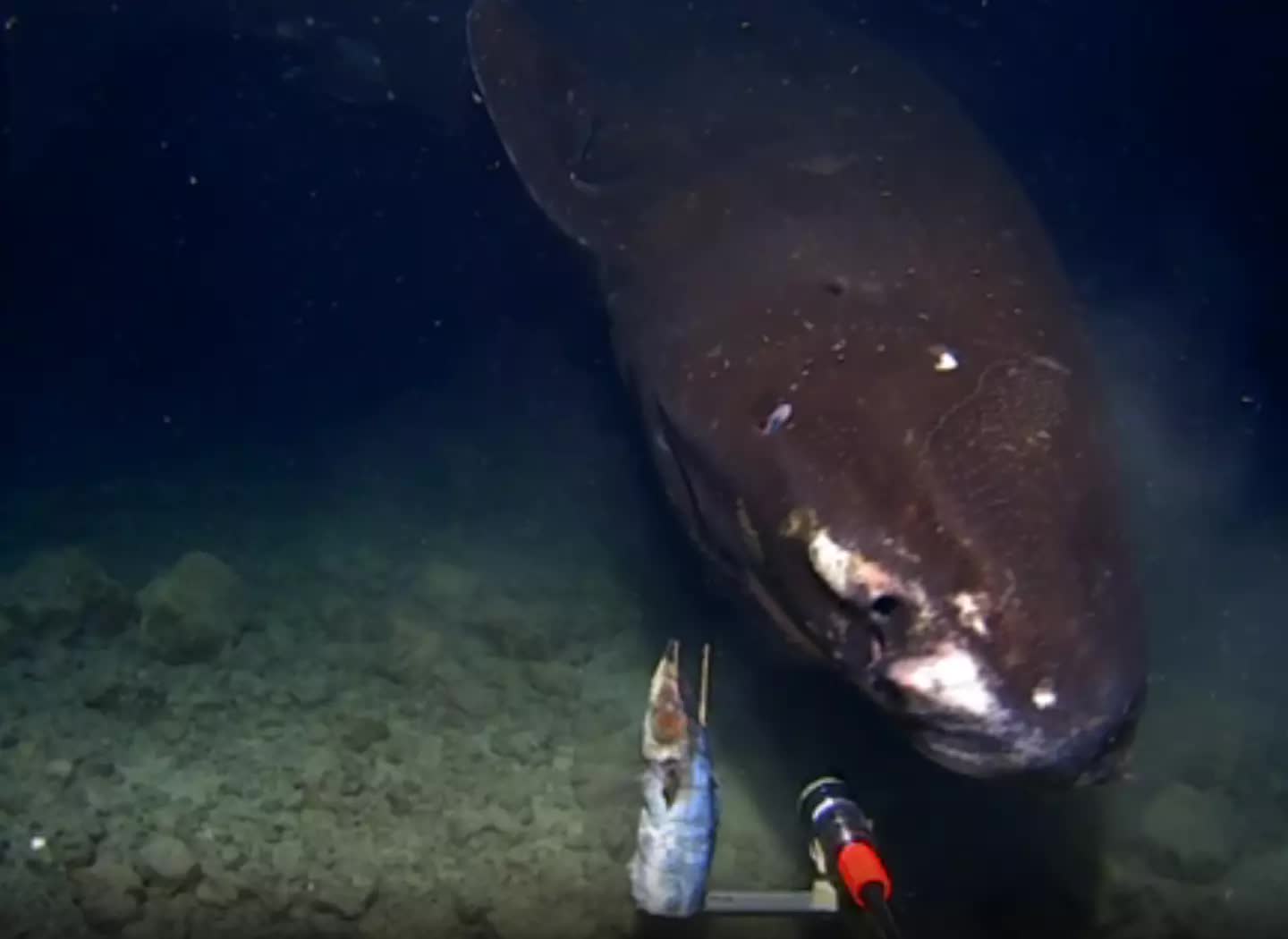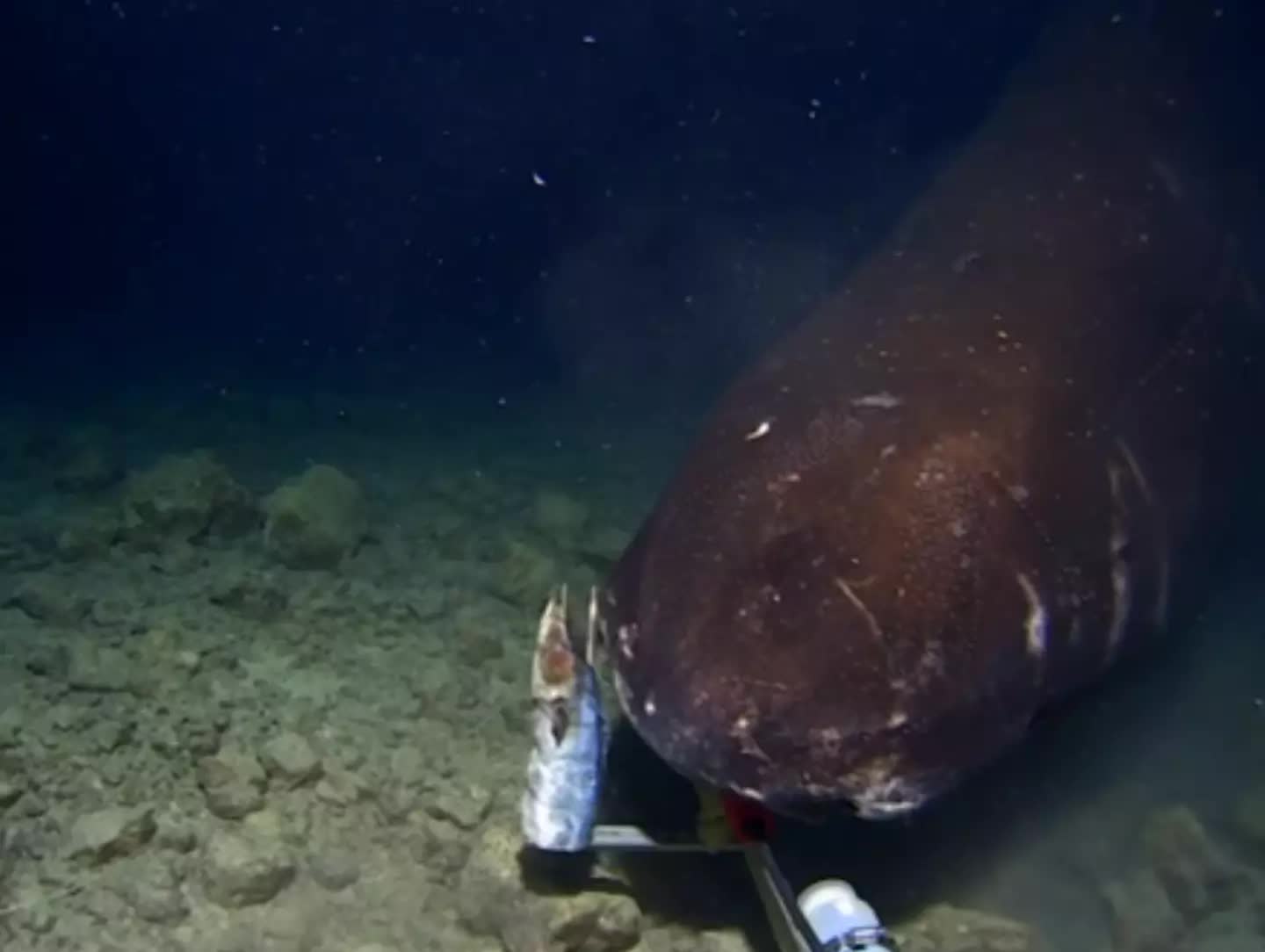Many strange images were recorded.
A giant sleeper shark in the Pacific Ocean was recently filmed at a depth of 1,400 meters below the sea floor. Its curious behavior when "tasting" the camera has left scientists extremely surprised.
There are many strange things going on in the deep sea, where humans cannot swim. Luckily, we have special cameras to explore this mysterious world. Humans can only dive to a depth of about 300 meters, and to go further, we need special equipment such as submersibles. Technology can go where the human body cannot, so when scientists launched an expedition into the Tonga Trench in the Pacific Ocean and dropped cameras down, they got a clear view of what lies below.



Beyond a certain depth lies a relatively untouched world, untouched by the world above. Scientists have captured amazing footage of a giant Pacific sleeper shark swimming up to the camera and “tasting” it. This is quite normal behavior for sharks, as they have no arms and must explore everything using their mouths.
Dr. Jessica Kolbusz (The Tonga Trench Expedition) explains in the video that the footage was shot at a depth of 1,400 meters, somewhere west of the Tonga Trench. She says that Pacific sleeper sharks can grow up to 4.4 meters long, although the largest of them can reach over 7 meters, which is quite a size. As for this magnificent but slightly terrifying creature of the deep, the expert explains that this particular shark is a female.
She said: "This sighting took place in the western part of the Tonga Trench, we think it was quite large, about 3.5 metres long, at a depth of 1,400 metres and as we did not see hooks on its pelvic fin we identified it as a female. It went straight to the camera, from this angle we could see completely inside the shark's mouth. Shortly after, it realised the camera was not very good and moved on to another bait. The temperature was around 2.5 degrees Celsius, which makes sense as we know they prefer colder waters."
The video was recorded
Indeed, as Dr. Kolbusz reports, we got a look inside the mouth of a Pacific sleeper shark. The large shark nipped at the camera, giving a clear picture of what it would be like to be eaten. Fortunately for the scientists and the shark, it quickly turned to the fish they had placed next to the camera as bait and did not destroy the deep-sea camera.
After taking the bait attached to the camera rig, the enormous shark then swam away, giving scientists a clear idea of its size. Born to live in deep, cold, dark waters where humans dare not dive, the Pacific sleeper shark is a very impressive creature, able to hunt silently because it makes very little noise when moving through the water. It tends to live on a diet of bottom-dwelling fish, while the stomachs of sharks that have been studied have also shown a preference for giant Pacific octopus.
Source: Ladbible
Source: https://giadinh.suckhoedoisong.vn/tha-camera-xuong-ranh-toi-duoi-day-bien-lan-dau-gioi-khoa-hoc-quay-duoc-hinh-anh-dang-so-chua-tung-co-172241212073730256.htm



![[Photo] Keep your warehouse safe in all situations](https://vphoto.vietnam.vn/thumb/1200x675/vietnam/resource/IMAGE/2025/10/1/3eb4eceafe68497989865e7faa4e4d0e)

![[Photo] Hanoi morning of October 1: Prolonged flooding, people wade to work](https://vphoto.vietnam.vn/thumb/1200x675/vietnam/resource/IMAGE/2025/10/1/189be28938e3493fa26b2938efa2059e)

![[Photo] President of the Cuban National Assembly visits President Ho Chi Minh's Mausoleum](https://vphoto.vietnam.vn/thumb/1200x675/vietnam/resource/IMAGE/2025/10/1/39f1142310fc4dae9e3de4fcc9ac2ed0)


















































































Comment (0)